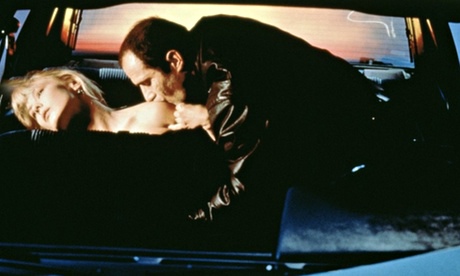
Singaporean film-maker Tan Pin Pin’s prize-winning documentary To Singapore, With Love has been banned in its own country after the government refused to grant it a licence. Naturally, this only served to draw more attention to the film and its subject: the fact that, in the 60s, hundreds of people were arrested and held without trial on suspicion of being communists – some for up to 17 years. Busloads of Singaporeans are expected to make their way to neighbouring Malaysia to see the film. Here are some other films that have been made off-limits by state or local censors.
Crash (1996)
When it was first released, the David Cronenberg adaptation of JG Ballard’s psycho-sexual erotic car crash novel was deemed so depraved that it was banned by Westminster council, meaning the British-Canadian production could not be shown anywhere in London’s West End. However, cinema-goers just needed to take a short walk to the non-Westminster end of Shaftesbury Avenue to watch the film. Another film that was famously banned in 39 local authorities in the UK was Monty Python’s Life of Brian.
Cannibal Holocaust (1980)
One of the most widely banned movies of all time, this gruesome Italian horror film featured an obscene amount of blood, guts and sexual assault. It was rumoured to be a genuine snuff film: the director Ruggero Deodato was arrested and charged with filming actors being killed (he was later cleared). The film, shot on location in the Amazon rainforest, also showed real footage of animals being slaughtered. In addition to Italy, it was banned in several other countries, including Norway, Germany and Australia.
L’Age d’Or (1930)
This Luis Buñuel-directed, Salvador Dalí-scripted surrealist film so incensed the French establishment that it was briefly banned in Paris “in the name of public order”. One of the first French “talkies”, over its 63 minutes it portrayed surprisingly explicit sex and violence (including the most famous toe-sucking scene in cinematic history), mocked the bourgeoisie, and did everything it could to provoke the Roman Catholic church, culminating in a scene of a crucifix covered in women’s scalps.
The Circle (2000)
After making two critically acclaimed films about children in his own country, Iranian director Jafar Panahi made The Circle, a much more serious project that dealt with the treatment of women in Iran, told from the viewpoint of four different characters. Authorities declared that the film was “offensive to Muslim women”, banned it before it was released, banned his next two films, and finally imposed a 20-year ban on Panahi making films. His following projects, This Is Not a Film and Closed Curtain, were made illegally and had to be smuggled out of the country.

